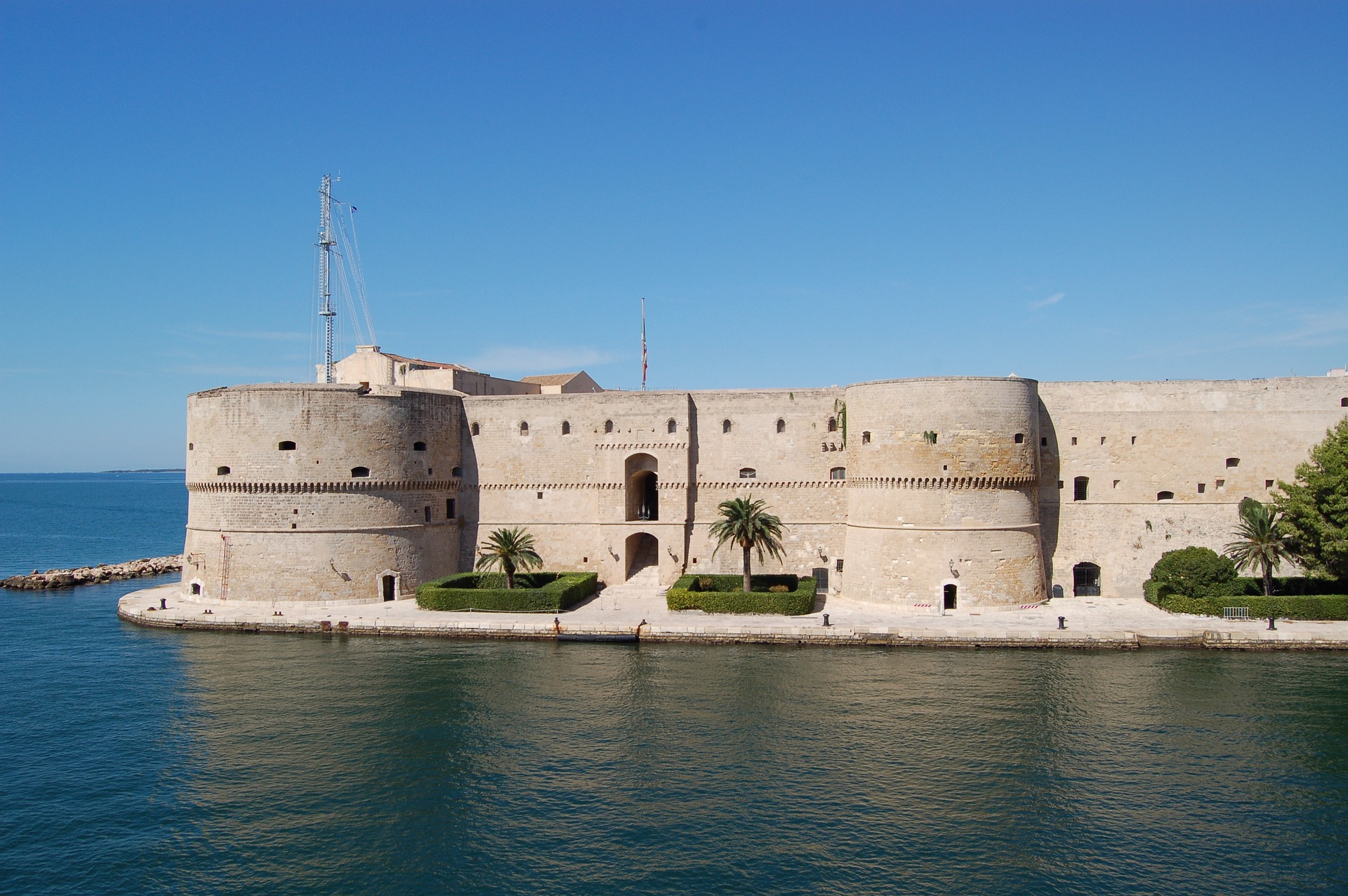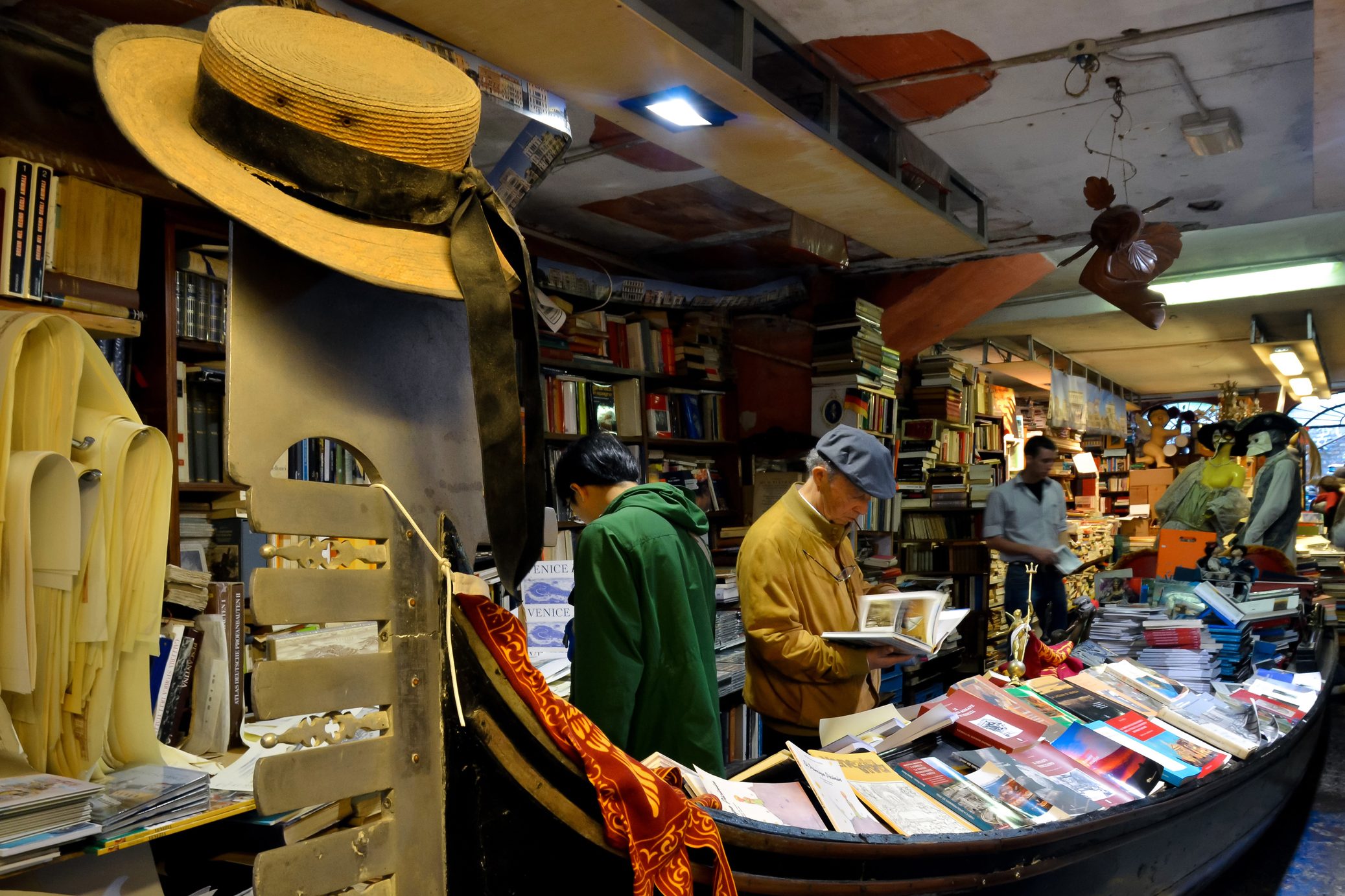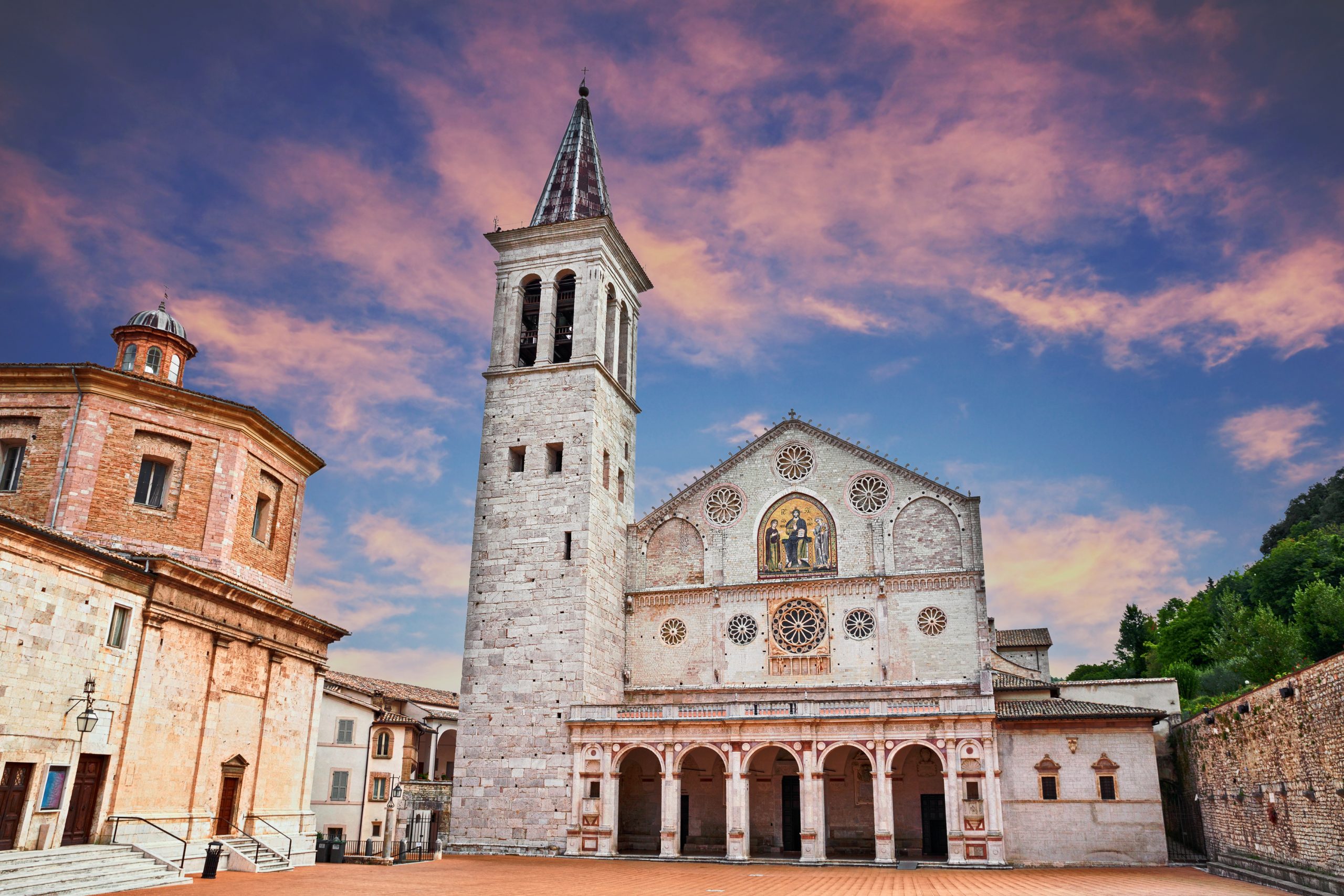A maritime town on the sunny shores of the Ionian Sea, Taranto is often overlooked by tourists who flock to more mainstream areas of Apulia, such as the Salento or Lecce. Still, Taranto, the third largest continental city in Southern Italy, has lots to offer when it comes to history, architecture and traditions that date back to the ancient Greek culture. Spartans, attracted by the area’s land, rich in water and very fertile, founded Taranto in 706 b.C. and signs of this ancient civilizations are still visible in the midst of wonderful landscapes and gorgeous natural settings.
The Aragonese Castle, also known as Castel Sant’Angelo, is a must-see while visiting Taranto: the main fortification in town, it marks the boundary between the old and the new part of the city.The fortress was designed in the late 15th century by Francesco di Giorgio Martini, upon request of the Aragon King Ferdinand I of Naples, who wished for it for defensive purposes. Located on the seashore to overlook Taranto’s canal, it was built over an earlier Norman structure, which was itself based on a stronghold that the Byzantines had constructed to protect themselves against the Saracens. The Castle was used as a prison by the Habsburgs and today houses an Italian Navy base, but is often opened to guided tours and used to stage exhibitions and events. For more information, opening times and visits check out http://www.castelloaragonesetaranto.com/
A walk through the old town is the perfect way to get to know Taranto: worth a stop are Piazza Fontana, one of the city main squares, the church of San Domenico, the Madonna della Salute Sanctuary, and a number of old palazzos, standing still in their timeless beauty. The picturesque narrow alleyways, the arches and stairwells, along with the old crafts workshops, contribute to Taranto’s unique atmosphere and make a stroll in this part of town an absolute pleasure.
Those who are passionate about history and archeology should check out the Museo Spartano – Iopgeo Bellacicco in Corso Vittorio Emanuele number 39, an amazing museum that covers the history of Taranto from its founding through the following Bizantine, medieval and baroque eras.
The stunning Cathedral of San Cataldo, Taranto’s main church, was built in the 11th Century and houses the relics of the city’s patron saint, one of its first bishops. The building was modified and refurbished throughout the centuries and, today, features an impressive baroque façade with a cupola of Byzantine influence. The church’s mosaic floor and the chapel of San Cataldo where the saint’s relics are preserved, are perfectly preserved as is a superb series of frescoes dating from 1713 painted by Paolo de Matteis. A small cruciform byzantine-era crypt below the transept holds the tombs of several bishops of Taranto.
Several archeological sites scattered across town have brought to light ancient necropolis from the Greek-Spartan era that date back to the 7th century before Christ and are some of the best preserved in Italy. For a list of the sites visit http://www.museotaranto.it/taranto_antica.htm
Apulia in general and Taranto in particular, are lands of great tradition also when it comes to gastronomy, featuring rich flavors and fresh ingredients. Wheat Altamura bread, Aleatico, Primitivo and Negroamaro wines, and five different PDO oils are just some examples of the amazing food and drinks visitors can try in Taranto. Seafood is, of course, a staple; order the freshest at Ristò Fratelli Pesce, right in the heart of town: the tagliata di calamari is a playful take on the beef tagliata, prepared with locally caught squid instead. If you want to rub elbows with locals, stop by Il Mugnaio -open every day for lunch only- and order one of their fried specialties and a cold beer or, if you prefer, one of their delicious pizzas. Wherever you go, make sure you try local cheeses: from goat cheese caprino to sharp caciocavallo to fallone di Gravina they are some of the best in all of Italy.
Taranto can be reached by airplane, flying with a charter or low cost airline into Aeroporto Marcello Arlotta, about 10 miles from the town center. The city is also linked by train to Calabria, Bari and Brindisi or by car by taking the Massafra exit on the A14 Bologna – Taranto highway.































